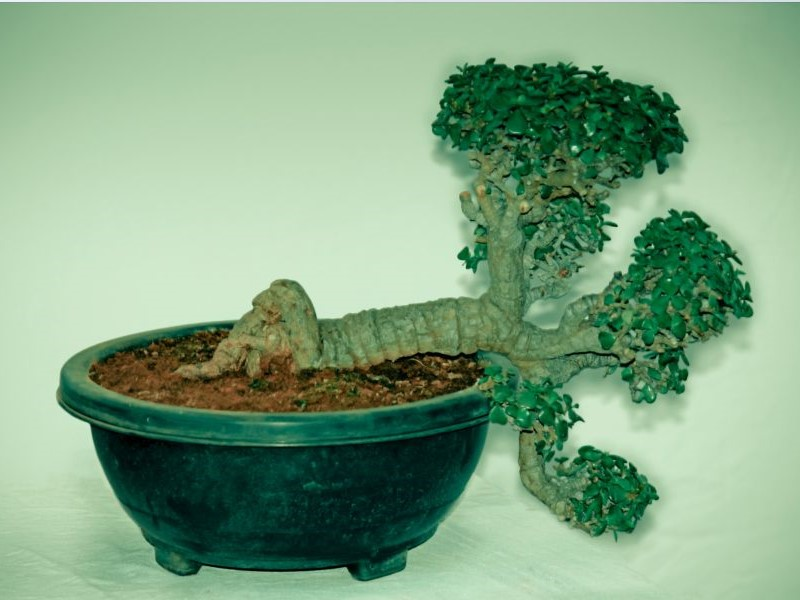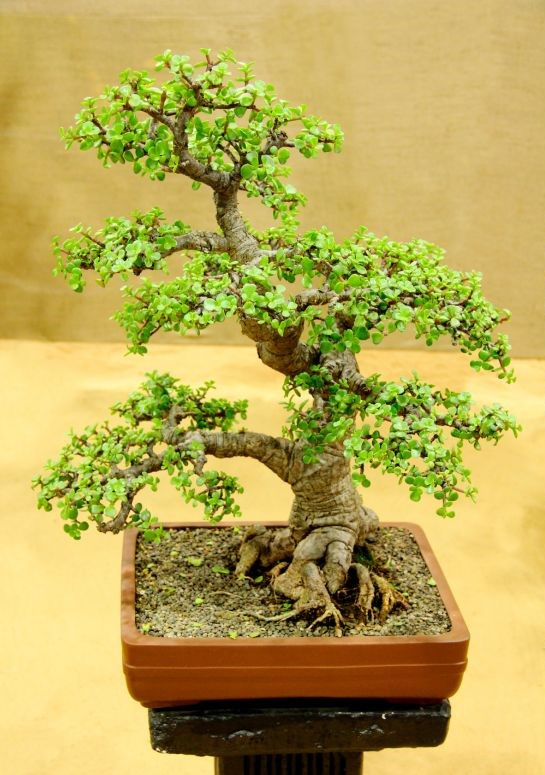Have you ever encountered the intriguing Elephant Bonsai Tree on your botanical journey? If not, Allow us to introduce you to the captivating tree- from its intricate branches to petite leaves, each element tells a story of adaptability and natural beauty.
Gain a deeper understanding of its origins, exceptional qualities, and the artful cultivation techniques that make a great addition to your botanical collection!
Getting to Know the Elephant Tree

Let’s begin our journey by understanding what makes the Elephant Bonsai Tree unique. The Elephant Tree is known for its distinctive and swollen grayish trunk, resembling an elephant’s leg, which gives it its common name. It typically grows in arid regions such as the Eastern Cape, South Africa, showcasing an ability to thrive in challenging desert conditions. With diverse species like Bursera microphylla in the Southwestern United States and Northern Mexico and Operculicarya decaryi in Madagascar, this bonsai treasure spans geographical boundaries, making it an intriguing addition to your collection.
Distinctive Features of Elephant Bonsai Species
Like the Elephant Tree, its bonsai counterpart is resilient, thrives in dry conditions, and has small, shiny, oval-shaped leaves that can resemble those of a succulent plant. The adaptability to low-water environments adds a practical dimension to their appeal as bonsai trees.
The Elephant Tree boasts a swollen, thick trunk with its semi-smooth or rough and grayish bark. The trunk elegantly twists and contorts, revealing a dance of nature’s making. This unique growth pattern, though small in scale, encapsulates the charm of the larger Elephant Tree.
Understanding Elephant Tree Bonsai Care
Caring and cultivating for Elephant Bonsai thrives on simplicity. To perfect their growth, focus on providing the ideal conditions. Here’s a brief guide to Elephant Bonsai care:
Soil and Watering Requirements
Opt for a well-draining soil mix, emulating the arid regions that inspire these resilient trees. A blend of Akadama, pumice, lava rock, or a combination of bonsai soil with grit or sand creates an ideal composition. This mixture strikes the right balance, allowing water to pass through easily while providing essential nutrients for optimal growth.
Maintain a balance in watering by allowing the soil to dry slightly between sessions. Carefully observe your bonsai’s response to find the sweet spot and avoid overwatering.
Sunlight Needs
Position your bonsai where it can soak up plenty of sunlight, ensuring it thrives. Be cautious of extreme heat, particularly during peak hours. Aim for a temperature range of 65-80°F (18-27°C) to maintain an optimal environment for your Elephant Bonsai’s growth and well-being.
Pruning
Timing is crucial, with the prime pruning season being spring and early summer when the bonsai is actively growing. Start by removing dead or yellowing leaves and branches to improve aesthetics and overall tree health. Employ sharp pruning shears to maintain a balanced and pleasing form, but be sure to avoid drastic pruning.
Seasonal Adjustments
Adapt your care routine based on the seasons. In winter, reduce watering and shield from frost. Spring, boost watering as growth resumes. In summer, protect from scorching heat, and in fall, gradually reduce watering as the growing winds down.
Fertilizing Essentials
Feed your Elephant Tree Bonsai a balanced fertilizer during the growing season, adhering to recommended guidelines for essential nutrients.
Repotting and Transplanting
Repotting is crucial to caring for your Elephant Tree Bonsai, giving it a fresh start and the nutrients it needs to thrive. Aim to repot every few years during the growing season. Carefully remove the bonsai from its current container, gently prune the roots, and place it in a new pot with well-draining soil. This process not only prevents root rot and dirt from becoming depleted of nutrients but also encourages healthy root development, contributing to the overall well-being of your bonsai.
Transplanting your Elephant Tree Bonsai involves a thoughtful approach to ensure its smooth adjustment to a new environment. When choosing a unique pot, choose one slightly larger than the current container, allowing room for the roots to expand.
Enhancing Aesthetics with Bonsai Elephant Tree

Styling an Elephant Bonsai tree is a nuanced and artistic process, delicately guiding its growth to achieve a desired aesthetic.
Begin by understanding the natural form of your Elephant Bonsai. Closely examine distinctive features such as the trunk’s shape, branch distribution, and leaf characteristics. This keen observation lays the foundation for the subsequent styling decisions.
Next, choose a design style that aligns with your vision for the Elephant Bonsai. Whether opting for a formal upright or cascading style, each imparts a unique visual character to the bonsai.
Pruning plays a pivotal role in achieving structural elegance. Utilize pruning shears to carefully trim excess growth, focusing on creating a balanced and elegant silhouette. Pay attention to branch proportions, maintaining harmony in the overall design.
Most bonsai have wires to guide branches into desired positions for more intricate shaping. Wrap the wire around the fine branch structure, bending and positioning them without causing damage to the bark or excessive stress.
Lastly, accentuate the Elephant Bonsai’s unique features, particularly its distinctive trunk shape. Allow the natural twists and turns of the trunk to contribute to the overall character of the bonsai.
Conclusion
A harmonious blend of simplicity and artistry unfolds in selecting an Elephant Bonsai Tree as your plant. Nurturing these miniature marvels demands a delicate equilibrium, from ensuring sufficient sunlight exposure to maintaining well-draining soil.
Choosing the ideal Elephant plant for bonsai artistry evolves into an artful endeavor, where the innate form transforms into a cohesive design through meticulous pruning and wiring techniques.
Whatever that be, may your Elephant Bonsai thrive, becoming a testament to the artistry and beauty that blossoms in every nurturing touch!





0 Comments